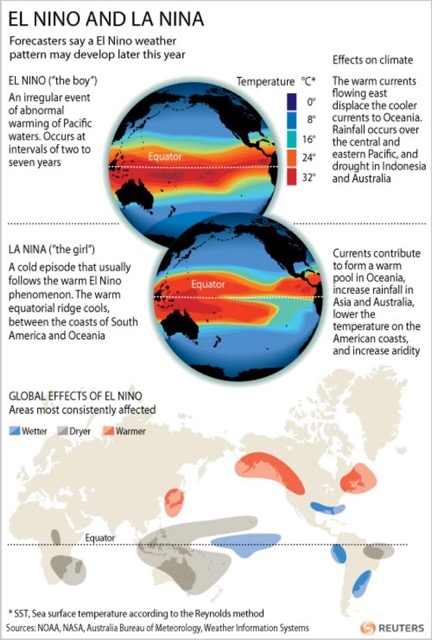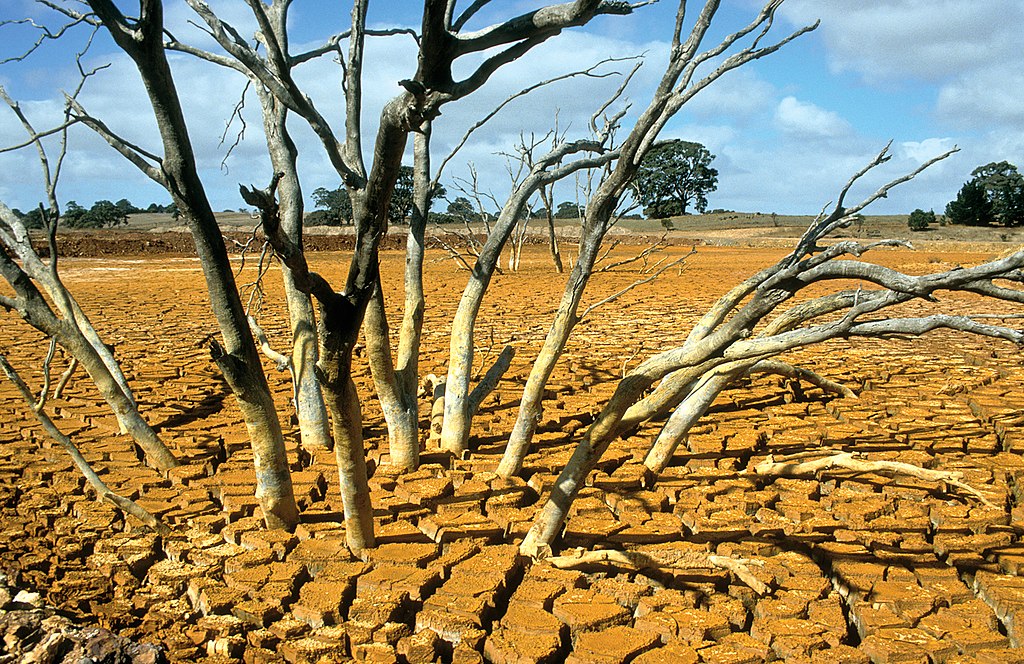The United Nations’ warning of an impending El Niño has sparked concerns over soaring global temperatures and the potential for unprecedented heat records. El Niño, a natural climate pattern, holds far-reaching consequences for weather patterns worldwide. Adding to the urgency, the effects of El Niño are amplified by climate change, leading to hotter and drier conditions even in milder instances. Australian experts such as Greg Mullins, the founder of Emergency Leaders for Climate Action (ELCA) are sounding the alarm, urging preparedness for a potentially severe bushfire season. Rob Rogers, Commissioner of the New South Wales Rural Fire Service, fears that this upcoming season could rival the catastrophic Black Summer fires.
According to Dr. Jaci Brown, the research director for CSIRO’s Climate Intelligence Program, Australians should prepare themselves for a severe bushfire season, regardless of whether El Niño occurs or not. Dr. Brown emphasised that the risk of bushfires remains high during the summer in Australia. She mentioned that despite experiencing three years of abundant rainfall and vegetation growth, the presence of numerous trees could contribute to a significant fuel load in the case of hot and dry conditions.
Unfortunately, persistent wet weather has impeded vital mitigation efforts, leaving the service significantly behind schedule. With abundant grass growth due to favorable conditions, the risk of bushfires and grass fires is heightened. Time is running out to catch up on preparations, leaving virtually all areas in the state vulnerable this summer.
In the face of these imminent challenges, early warning systems are critical to mitigating risks and safeguarding communities. This blog post delves into the essential role of exci’s early wildfire detection system in monitoring and combating wildfires during El Niño events.
Understanding El Niño and Its Consequences
El Niño, a climate phenomenon characterized by warming sea surface temperatures in the central-east equatorial Pacific, is predicted to return in 2023, leading to unprecedented heatwaves and pushing global average temperatures beyond the 1.5°C threshold. Scientists have expressed concerns about the potential impacts of this comeback, warning that even a half-degree increase beyond 1.5°C will significantly exacerbate the risks of droughts, floods, extreme heatwaves, and food and water insecurity, plunging millions into poverty.
El Niño and its counterpart La Niña are opposite phases of the El Niño Southern Oscillation (ENSO) and occur irregularly, lasting for several months to even years. The presence of El Niño or La Niña significantly affects weather patterns worldwide by modifying the general flow of the atmosphere. During an El Niño event, the trade winds weaken, resulting in warmer air in the eastern and central parts of the tropical Pacific.

While the last El Niño occurred in 2018-19, the world has experienced an exceptionally long La Niña since 2020. La Niña, the cooling opposite of El Niño, has temporarily slowed global temperature increases. However, with El Niño predicted to develop in the near future, global heating could experience a new spike, potentially breaking temperature records. The strength and duration of this impending El Niño are still uncertain. However, experts anticipate that temperatures in 2023 will surpass those recorded in 2022, which was ranked as the fifth hottest year in history.
Scientists predict that the impacts of El Niño this year could extend beyond the central-east equatorial Pacific. Professor Andy Turner from the University of Reading (UK) warns of potential effects reaching the northern hemisphere mid-latitudes, with Spain likely experiencing wetter conditions from summer onwards and the eastern seaboard of the US facing drier conditions in the subsequent winter and spring.
Experts emphasize that the combination of El Niño events and the ongoing effects of climate change will lead to even stronger impacts. The increasing severity of El Niño events and the ongoing progression of climate change raises concerns about the likelihood of unprecedented heatwaves during the upcoming event.
The Need for Early Warning Systems
There is an urgent need to implement new and innovative methods for detecting and rapidly responding to bushfires, particularly during periods of high fire danger. The goal is to deploy firefighting resources on the ground and air as quickly as possible to contain and extinguish fires before they become uncontrollable. Critical components of an early detection and initial attack system include swiftly identifying and reporting fire ignitions, monitoring fire movement and intensity, and providing timely information to communities.
Recognising the potential risks associated with El Niño, the UN’s World Meteorological Organization (WMO) emphasises the need for preparedness and safety measures. exci’s early wildfire detection system aligns perfectly with this objective, as it provides invaluable support in mitigating the adverse effects of wildfires.
exci’s Early Wildfire/Bushfire Detection Technology
exci’s early wildfire detection system leverages advanced artificial intelligence (machine learning algorithms) to detect wildfires at their nascent stages. By analyzing camera data for the presence of smoke indicating fire, the system can identify and pinpoint wildfire occurrences within minutes in real-time, enabling swift and targeted responses. During an El Niño event, the risk of wildfires is significantly amplified due to the associated drought and increased temperatures. exci’s early wildfire detection system is a powerful tool in combating these fires before they escalate, saving lives, protecting ecosystems, and minimising property damage.
The Role of exci in Future El Niño Events
As climate models warn of a potential “super El Niño” this year, the importance of proactive measures and reliable early warning systems cannot be underestimated. exci’s commitment to staying at the forefront of technological advancements ensures its early wildfire detection system remains effective even during extreme events. By continuously monitoring and refining their algorithms, exci can adapt and enhance their system to address the unique challenges presented by each El Niño event. This ongoing dedication ensures that communities and authorities have access to the most accurate and timely information to make informed decisions and take prompt action.
Conclusion
El Niño events have far-reaching implications for weather patterns, global temperatures, and the increased risk of wildfires. As the world prepares for the potential development of an El Niño in the coming months, the need for effective early warning systems becomes paramount to protect our community, environment, and assets.
exci’s early wildfire detection technology is a crucial tool in mitigating the impact of wildfires during these events. By leveraging advanced technologies and continuous improvement, exci empowers communities and authorities to respond swiftly and effectively, minimizing the risks of El Niño-induced wildfires. As we face the challenges of a changing climate and the increasing frequency of extreme weather events, we must invest in innovative solutions like exci’s early wildfire detection system.
During El Niño, wildfire risk intensifies due to drought and high temperatures. exci’s system detects fires and provides fire monitoring with direct access to cameras. This data empowers firefighting efforts, evacuation coordination, and area protection. Integration with existing infrastructure enhances exci’s effectiveness. Real-time data enables coordinated decision-making and cohesive responses among meteorological services, emergency responders, and local authorities.
exci’s AI-powered early wildfire/bushfire detection system has undergone extensive training using vast datasets, including over one billion ground-based camera images and over 500,000 satellite images annually. This training enables the system to achieve exceptional accuracy and speed in detecting the presence of smoke and heat, even for small fires as tiny as a garden shed. The system can automatically identify these fires within minutes of ignition, with an extremely low false positive rate. Furthermore, exci processes a staggering amount of data, handling over 2.5 million images daily. This abundance of data allows for continuous improvement of its advanced machine learning models, resulting in faster and more precise fire detection with high geospatial accuracy.
exci stands out as the only early wildfire detection system that has been successfully deployed on a large scale. With nearly 1,000 cameras covering over 130 million acres in California and commercial deployments in Australia encompassing over 25 million acres of forestry and plantations, exci has proven its effectiveness in real-world scenarios.
Since the inception of our system, we have successfully detected an astonishing 110,000 fires and counting. This number continues to grow, significantly reducing the economic, environmental, and social impact on exci’s customers and the communities they serve. To witness how the system works, please watch the short video below!
Take proactive steps to safeguard your assets from the devastating impacts of wildfires during the upcoming El Niño events.
Don’t let hazardous events become catastrophic!
Contact our friendly team today for a comprehensive demonstration of exci’s system and discover how it can protect your assets while also protecting your community.
Australia:
Phone: 1300 903 940
International:
Phone: +61 458 594 554
Visit our website at https://www.exci.ai/ to learn more and take the first step towards a safer and more resilient future.
by Gabrielle Tylor
exci pty ltd

